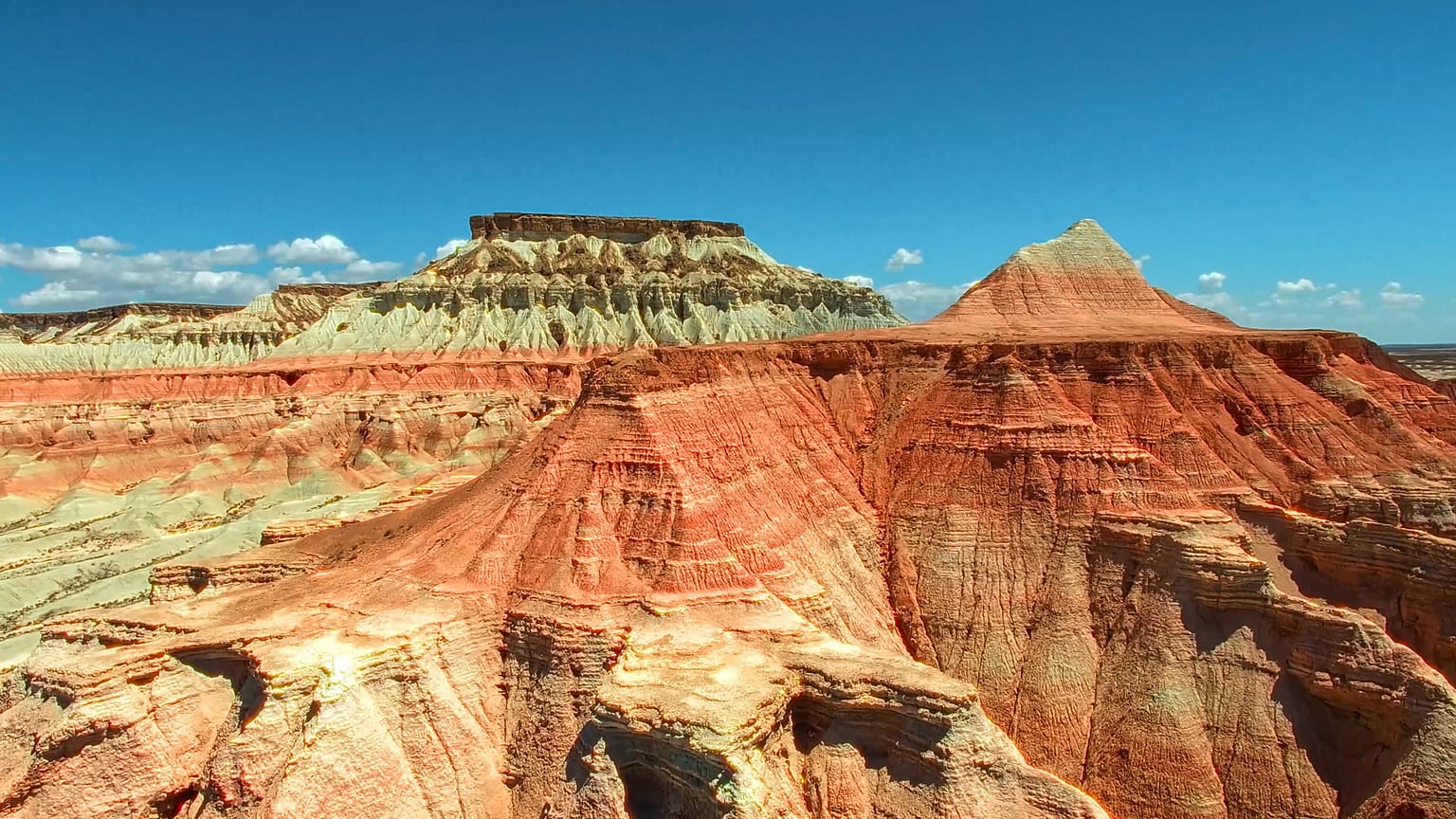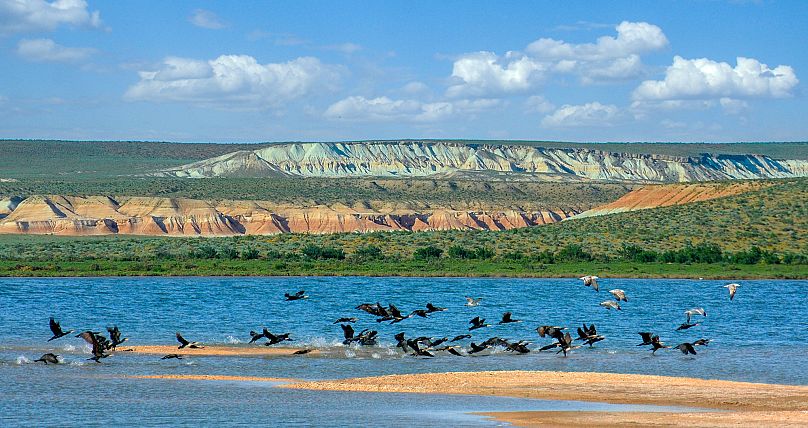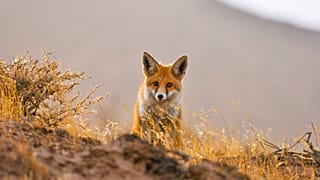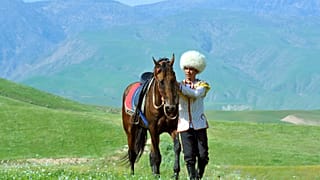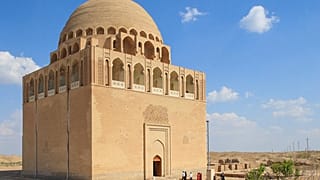For travellers keen on venturing beyond the familiar, Turkmenistan offers a unique land rooted in ancient nomadic traditions, Silk Road history and an abundant natural world.
From the rusted dunes of the Karakum Desert to the serene shores of the Caspian Sea, Turkmenistan’s landscapes are timeless yet ever-alive with incredible flora and fauna that have sustained communities and settlements for millennia.
Valuing ritual and continuity as much as innovation, Turkmenistan’s current cultural revival weaves heritage and symbolism with forward-facing ambition, cementing this Central Asian nation’s status as one of the world’s most intriguing destinations for culture, nature, and history lovers alike.
Where landscapes shape identity
Turkmenistan’s geography has shaped how nomadic Turkmen people live, build and survive here for centuries.
Covering around 70 per cent of the country and once submerged under an ancient sea, the Karakum Desert is a vast place of extremes, dotted with oases and rolling dunes. Travellers can ride camels along historic trade routes, sleep in yurt camps and visit the Repetek Biosphere Reserve, one of the oldest in Central Asia, where foxes, sand cats, and desert reptiles thrive among native saxaul trees.
In the east, the Koytendag Mountains offer an entirely different kind of wonder. This remote region, close to the Uzbek and Afghan borders, is home to Ayrybaba, Turkmenistan’s highest peak, and a rugged ecosystem filled with endangered Urial sheep, ibex and rare medicinal plants. In the protected Koytendag Nature Reserve, travellers can follow trails through juniper forests, explore dinosaur footprint trails and discover the Umbar Waterfall, which surges to life each spring with snowmelt.
On the Caspian coast, meanwhile, the Hazar Nature Reserve provides vital habitat for migratory birds and the endangered Caspian seal. Kayaking, wildlife spotting and salt-lake tours are available led by registered guides.
Whether hiking through the rust-coloured Yangykala Canyons, wandering into the forested Sumbar Valley, or stargazing over desert ridges, Turkmenistan offers a kind of travel that feels deeply connected to place.
Eco-tourism here is developing slowly and deliberately. With support from UNESCO and international conservation groups, local guides and rangers are more frequently hosting treks and wildlife tours that support rural livelihoods while protecting fragile ecosystems.
For locals, these landscapes are sacred. Native plants, mountains and the natural world are woven into Turkmen art, design and even language, while seasonal festivals follow the rhythms of the land. For travellers willing to slow down and listen, Turkmenistan offers a cultural exchange like no other on Earth.
Learn more about Turkmenistan’s untouched natural world.
A cultural revival rooted in history
The country’s numerous UNESCO-recognised historical sites, from the ruins of Merv and Nisa to the caravanserai of Kunya-Urgench and Dehistan, offer broader insight into Turkmenistan’s diverse cultural heritage, marking ancient empires and trade routes that trace back millenia.
Turkmenistan’s ancient settlements have long stood as the meeting points of world cultures, significantly influencing the development of human history. Between endless deserts and grand canyons lie the crumbling ruins of grand mosques, palaces and fortresses – including the impressive Great Gyz Gala fortress of Merv – which are fast gaining popularity among curious world travellers.
Learn more about Turkmenistan’s Silk Road cities.
Reweaving identity through craft and education
Rather than chasing external validation, Turkmenistan’s renewal draws from within. Its revival of traditional crafts, storytelling, and cultural festivals are part of Turkmenistan’s ambitions to promote its rich cultural heritage to the world, mirrored by long-term investments in education and ecological preservation.
In Turkmenistan’s nomadic high-mountain valleys and desert communities, education and heritage go hand in hand. Youth programmes, rural leadership academies and artisan cooperatives all aim to preserve the natural and cultural wealth that defines Turkmen identity — empowering young people to reconnect with traditional knowledge and reinterpret it for a modern world.
As a visitor to Turkmenistan, there are numerous ways to get involved in the national culture, with parades, festivals and cultural events taking place throughout the year, from open-air horse shows featuring the prized Akhal-Teke breed to telpek hat-making workshops in rural communities.
Where nomadic symbols rise from the landscape
In Ashgabat, Turkmenistan’s capital, symbolism takes centre stage. The city’s marble-clad buildings draw their reference from classical geometry and national motifs, in a visual aesthetic unique to Turkmen society.
From the falcon-shaped international airport to the opulent National Museum of Turkmenistan, the city’s architectural feats are not just record-breaking, they’re rooted in national values that make them all the more remarkable.
Outside the capital, travellers can stay in traditional yurts around Darwaza, where nomadic design meets sustainable tourism in the shadow of the Karakum’s shifting sands. These camps reflect a deeper truth: that Turkmen culture is as much about movement, ritual and land as it is about permanence.
Looking ahead
Turkmenistan’s enduring allure lies in its ability to hold space for both past and future. A place where leopards still roam high ridges, yurts are built for celebration, and silence in the desert makes way for reflection.
It may be one of Central Asia’s best-kept secrets — but for those who walk its canyons, share its tea and wander its ancient cities, Turkmenistan leaves a lasting impression.

